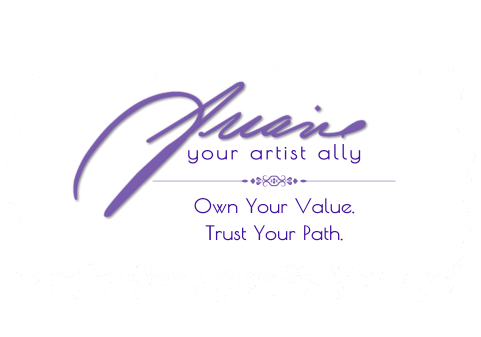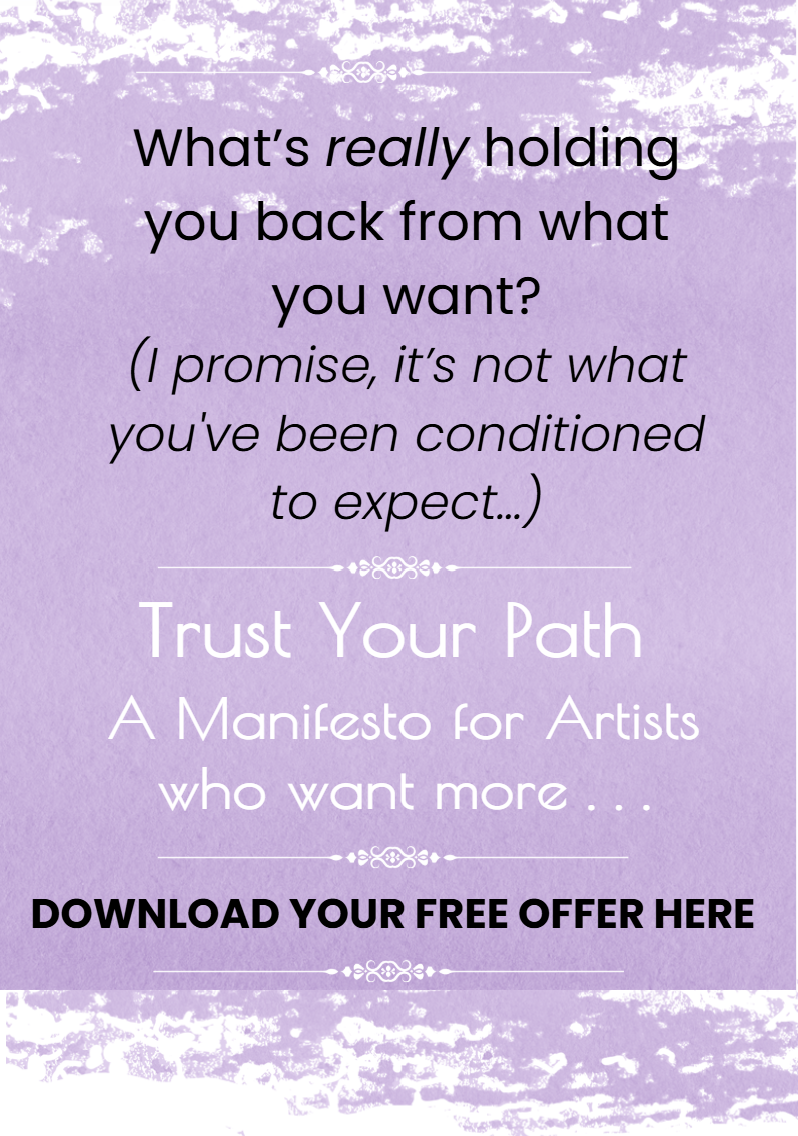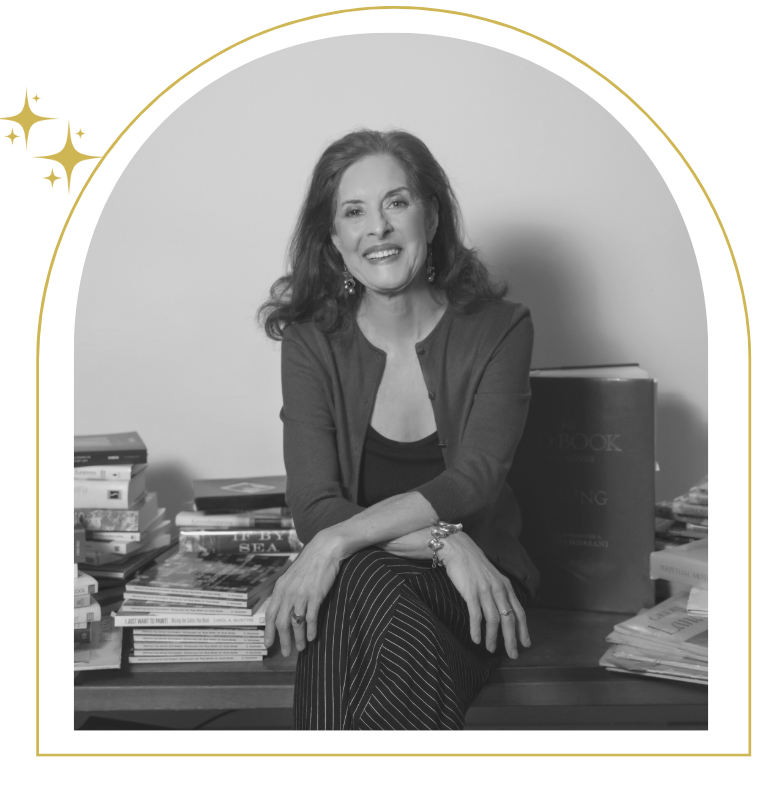Ariane Goodwin, Ph.D.
An Educator, Editor, Writer, and Art Career Coach
who believes artists change the world!
Part 2: Getting Personal, Being Real
Getting personal and being real is really pretty simple when you write about you and your art.
Sometimes, it’s helpful to clear out the writing weeds… so…
First, what it’s not:
It’s not the therapy-style of baring-your-soul.
It’s not the I-love-you-and-need-to-tell-you-everything hashtag.
It’s not the because-I-need-love-I’ll-cut-open-a-vein-for-you hashtag.
Or winging it because you’re going for the informal look.
In an artist statement, getting personal and being real is limited; it’s focus is on your relationship to your art where your feelings, preferences, and vision can offer a potential collector what I call a “peek behind the canvas (or potting wheel, or marble, or cello…).”
The key here is “a peek.” You don’t need much in an artist statement that is only three paragraphs long (best case scenario), or even one page long (not the most desirable, but can work). And your reader only needs enough to feel as if you, like them, are real.
Sometimes it’s as simple as connecting a daily task to what you do:
Waking up before sunrise, rolling out of bed, one of the first imagines to rise in my consciousness is where I left off last night with my newest piece, Sky High.
That’s the spirit of how you want to connect.
There’s also a couple of writing techniques that, by their nature, open the door to getting personal and being real.
The first is the all-important I: first person.
This one can get tricky, especially if you are harboring obvious or hidden places where you lack confidence in your work.
Speaking in the first person, especially when you are writing, is saying: this is me. I stand in my truth wholly, fully, completely.
And sometimes, for some artists, first person be unnerving—anything from a slight discomfort to downright panic. It’s the most vulnerable position you can take.
And it’s essential you do.
Because, if you use third person, your statement sounds like a critic wrote it, and you are not a critic. Or it sounds as if an academic wrote it, but you are the artist (even if you also happen to be an academic).
It’s your work, not their work. So, owning it is actually the first step.
The second technique is specificity.
When you use generalities or overworn language, you immediately become no one (or everyone). Even if your art is fully original, with a well-developed fingerprint, if the language you use in your artist statement contradicts that, you immediately create dissonance in the mind of your potential collector.
Compare this:
As I shape the clay, I’m drawn into the pot as if I’m in a dream.
With this:
As the wet clay cools my palm, the emerging pot draws me into a rhythmic dream where the smell of clean earth rises ‘round me.
With word specificity, you can capture the same uniqueness that your art exudes.
That’s it.
You can interweave these three simple elements—a peek behind the curtain, first person, and specificity—with the core elements of your artist statement—the why, how, and why of your relationship to your art—and draw people even closer to the work that you love to make.
Remember, revealing the true spirit of your work…is the work,
even in challenging times,

Your truth. Your power. Your words. Claim it!
P.S. Want the whole system? And my Holiday Bonus– 10 Tips for a Perfect Artist Statement Presentation?
P.S. Remember, just for the holidays, I’m offering a HUGE Holiday Bonus when you buy my book, Writing The Artist Statement: Revealing the True Spirit of Your Work.
Ready for more? Click here!
Buy my book by the January 14th deadline:
Writing The Artist Statement:
Revealing The True Spirit Of Your Work
Ariane Goodwin, Ph.D.
The first & only complete resource book that works for visual artists at all levels: beginning / mid-career / advanced
My artistic partner is dyslexic, with a real writing phobia. Your book is a fantastic teaching air. The floodgates have opened and made him realize that he can write. What a godsend! ~J. Brett, London, UK
- Overcome writing blocks
- Avoid 7 blunders that tag you as an amateur
- Make your statement engaging and compelling
- Learn why galleries & collectors love good ones (even if you don’t)
- Use the power of sensory connection to help people remember you
- And get the Holiday Bonus: 10 Tips for a Perfect Artist Statement Presentation
Writing your statement has never been so easy! And that’s a promise…
- P.S.S. If you already have my book, but still want 10 Tips for a Perfect Artist Statement Presentation, send me an email: ariane@arianegoodwin.com
Revealing what, how and why you do your art does not dismantle either the beauty or mystery of it. Quite the opposite. Your effort to reach out invites others to participate in the mystery and to share the beauty.
—Ariane







